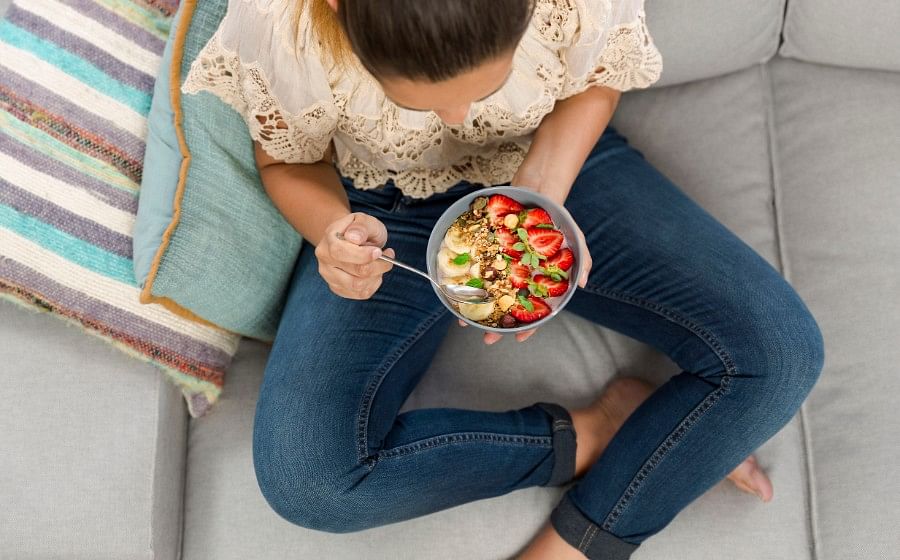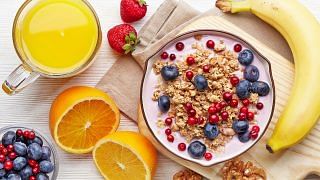Deciding to make a change in your diet to a healthier one is already half the job done (and we applaud you for your decision!). The other half is actually doing it. Sure, staying away from greasy fast food or hawker food and sinful cakes and pastries is one way to go about this, but there are also things you can switch out easily to make your meal a tad bit healthier. And it’s not that painful too — i.e. the taste isn’t compromised.
Don’t believe us? From using honey instead of sugar and swopping potatoes with sweet potatoes, we show you how you can introduce tiny tweaks into your diet for #guiltfreefood. These changes are small but can make all the difference. A little goes a long way after all.
1. Replace sugar with honey
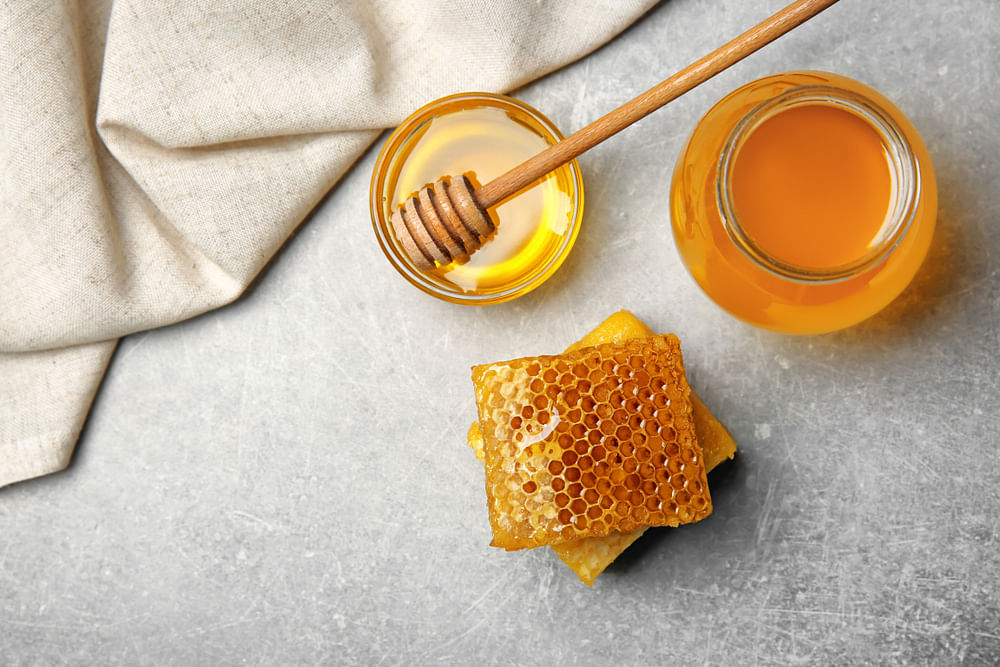
Photo: Shutterstock
Everything tastes a little better with a little dash of sugar. But as we add and add little teaspoons to our cake batter and teas, we might be doing ourselves more harm than good for a fleeting moment of that sugar rush. Refined sugar is a deadly silent killers, with its high calorie count and strong relation to diabetes and obesity. High-sugar diets have also been associated with an increased risk of heart disease and development of certain cancers.
In short, it’s bad news for your health. While it might be hard controlling the amount of sugar in your food when dining out, you can still make the effort by choosing less high-sugar foods. And if you are still craving for something sweet, try substituting sugar with honey. Honey adds a tinge of sweetness and is healthy too. High quality honey, in particular, contains many important antioxidants which have been linked to many health benefits, such as reduced risk of heart attacks, strokes and some types of cancer.
2. Eat dark chocolate instead of milk or white chocolate

Photo: Shutterstock
Just like sugar, chocolate frequently appears in our vocabulary when we wax lyrical about comfort foods. Decadent and rich in cocoa, it’s deliciously addictive, but can also be bad for your health, thanks to its high fat and sugar content. Chocolate has been found to be associated with acne, obesity and high blood pressure among many other diseases. But that also doesn’t mean you have to let go of chocolate completely to suit your healthy diet.
Good quality dark chocolate with a high cocoa content is really good for you as it contains a decent amount of soluble fibre and minerals including iron, magnesium and potassium that bring large health benefits. It’s also packed with a variety of antioxidants, which are known to lower blood pressure, reduce risk of heart disease and improve blood flow to the brain. So if you are going to consume chocolate at all, dark chocolate would be the healthier choice. But of course, it is still best consumed in moderation because of its high levels of calories and sugar content.
3. Go for frozen yogurt instead of ice cream
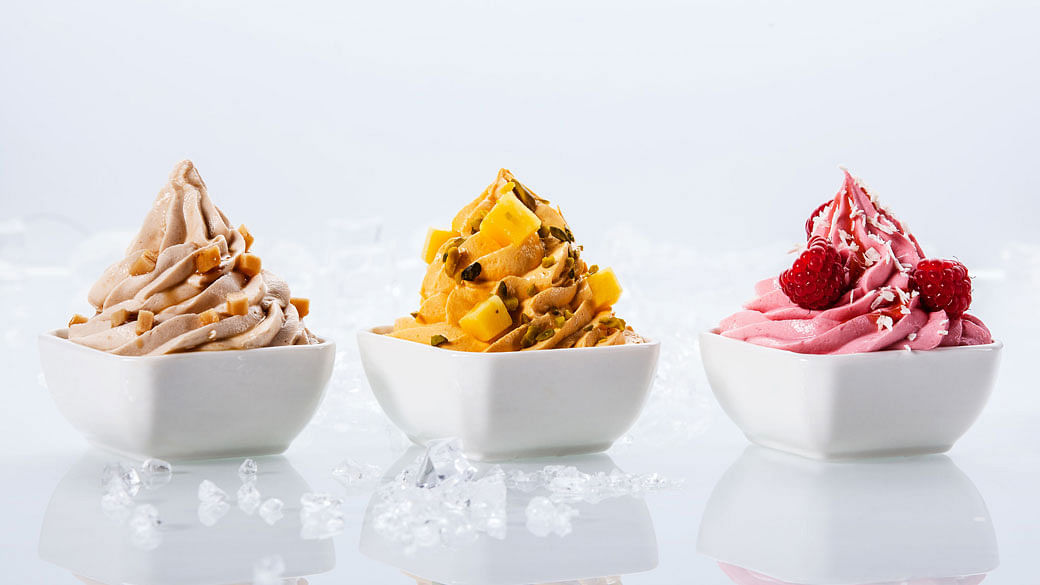
Photo: 123rf
We know — ice cream is a hard one to let go. It’s creamy, it’s sweet, it’s soft, it’s comforting, it’s deliciously icy cold…we could go on. Deciding to switch to a healthier lifestyle is already a tough feat, but staying away from ice cream to realise it? Hard pass. But fret not. There’s a healthier alternative to the saccharine dessert. Try frozen yogurt. It might not be as sweet as ice cream but you can count on that familiar soft and cold texture that just melts in your mouth with every scoop. Better yet, it contains loads of calcium (which is great news for your teeth and bones) as well as vitamin B which can protect you against heart and other related diseases. Yogurt also contains probiotics, which improves digestion, bloating as well as constipation.
4. Indulge in sweet potato instead of potato
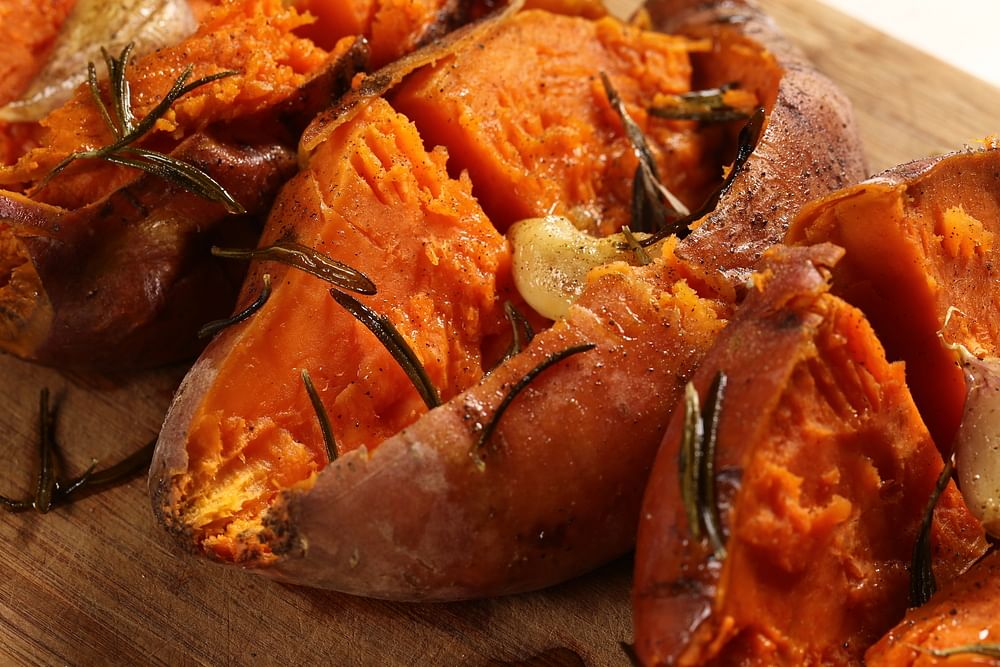
Photo: Shutterstock
The humble potato is well loved for its versatility and compatibility with almost every kind of food and condiment. It can be made into any dish, but common favourites include fries, mashed potatoes, baked potatoes and hashbrowns. Although plain baked potato is considered healthy — it’s fat free, cholesterol free and packed with fibre — it is more often than loaded with dressings such as butter, sour cream and cheese or deep fried with a lot of oil, which means there’s a spike in calories, fat and sodium. Consider its alternative, the sweet potato.
Sweet potatoes, especially the orange and purple varieties, are rich in antioxidants that protect your body from free radicals. Sweet potatoes also have a low to medium glycemic index (an ability to raise the glucose of blood) which means that they make a spike in blood sugar levels a less likely affair compared to regular potatoes. They are also a great source of manganese which is a mineral good for bone growth, metabolism and absorbing vitamins among many other health benefits. Some studies have even shown that consuming white potatoes, no matter how they are cooked, can lead to a higher risk of type 2 diabetes. Now that’s a good reason to make the switch.
5. Replace pasta with zucchini noodles
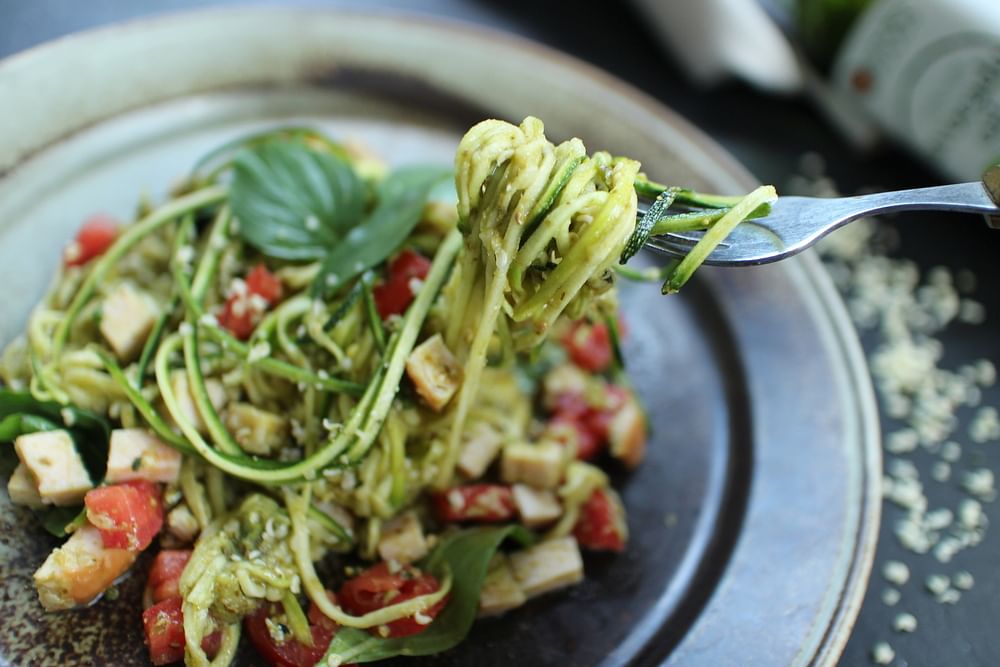
Photo: Shutterstock
A research on nutrition and metabolism led by University of Toronto fellow Laura Chiavaroli found that while pasta alone does not lead to unhealthy weight gain, pairing it with salty and high-calorie sauces makes the meal unhealthier than it needs to be. Pasta is also high in carbs, which can be bad for you if you eat it in excess. Refined pasta is usually higher in calories and lower in fibre, which may result in decreased feelings of fullness after you eat it. You can swop it out with high-fibre, whole-grain pasta, but if you’re feeling adventurous, consider the zucchini.
Less carbohydrate heavy and packed full of vitamins and minerals, zucchini — cut into thin, noodle-like strips and called zoodles — is fast becoming popular among foodies as a good alternative to noodles and a healthy swap for the traditionally less-than-healthy food. Some of its health benefits include improved digestion due to its high fibre content. It’s also rich in antioxidants such as carotenoids — which includes lutein, zeaxanthin, and beta-carotene. These have been known to bring benefits to the eyes, skin, and heart, as well as offer some protection against certain types of cancer. What else can the zucchini do? It is also found to be related to lower blood sugar levels, healthy blood circulation and weight loss.
6. Try banana bread instead of cake

Photo: Shutterstock
Cakes are an ultimate comfort food because of how soft, sweet and welcoming they taste, especially when eaten warm and when slathered with cream. But we don’t really have to tell you how unhealthy they are — they have high content of carbohydrates, fats and calories and the high levels of refined sugars may increase your blood glucose level.
Still, it doesn’t mean you have to go without. Try its alternative, the banana bread instead. It’s still moist, sweet and flavourful, but is packed full of nutrients thanks to the bananas, which provide potassium, protein, vitamin B6, vitamin C, dietary fibre and manganese. Bananas are also good for your gut and also give you an energy boost. However, banana bread can still be full of calories and sugar, so pick those that are made with less sugar and with whole grain flour. Keep calm and eat cake? We say: Keep calm and eat banana bread instead.
7. Go for cauliflower rice instead of white rice
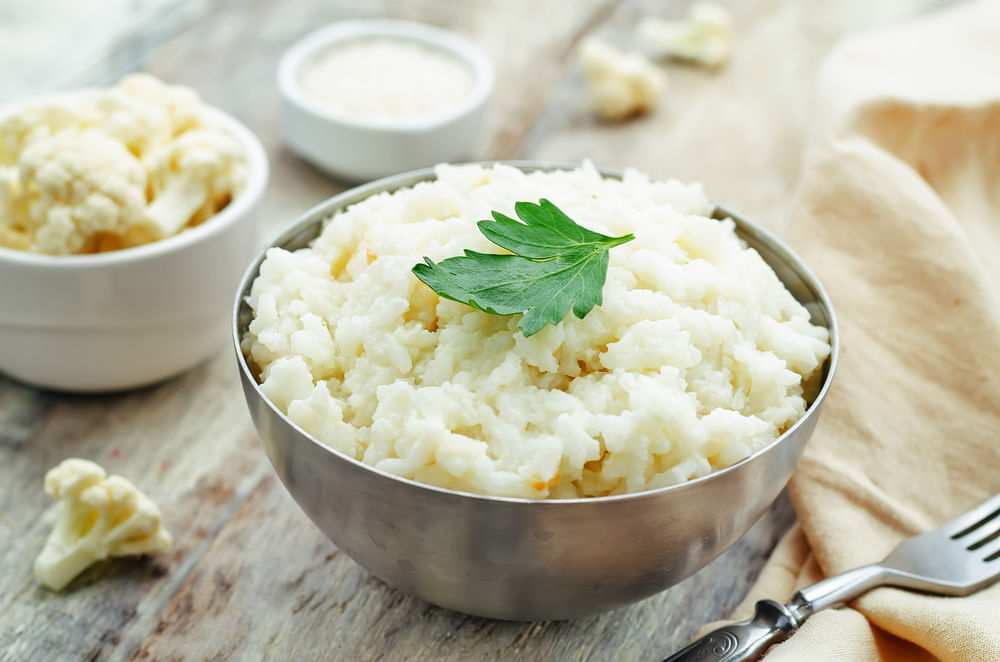
Photo: Shutterstock
White rice is a staple for many Asian cultures, but it’s also known to be unhealthy and highly processed. White rice is also empty carbs and is stripped of its nutrients, although some manufacturers do enrich their rice with added nutrients such as iron, folic acid, niacin and more. White rice also has a high Glycemic index, and a higher intake of it is associated with a higher risk of type 2 diabetes. While completing letting go of rice is not necessary and kind of impossible (we all need our chicken rice fix after all), you could give cauliflower rice a try when you’re whipping up a meal at home.
What is cauliflower rice? Basically, you derive it by breaking down the cauliflower florets into couscous or rice-size pieces, and then use those bits as you would rice. Cauliflower is one of the most nutritious foods, containing fibre, potassium and a whole lot of vitamins. Plus, its only 25 calories per cup of cauliflower rice, compared to 218 calories for a cup of cooked brown rice. It’s low-carb and low-calorie qualities make it a great alternative to rice. Plus, its versatile too. You can use it to make pizzas, casseroles and fried rice as well (some recipes here). Pretty impressive right?
8. Drink wine instead of beer

Photo: Shutterstock
A pint of beer has about 180 calories in it but a glass of wine? About 115. While it might not seem like a big difference, remember, a little goes a long way. We all know someone with a beer belly that they cannot seem to shed off. Be that as it may, drinking in moderation is more important than your choice of alcohol.
Drinking alcoholic beverages moderately has been found to decrease the risk of developing heart diseases, namely, coronary heart disease and heart attack among many others, by a whopping 30 to 50 per cent, according to researchers at the American Heart Association. This is especially so for moderate amounts of red wine, due to its high content of powerful antioxidants. Moderate consumption of alcohol has also been linked to a drop in diabetes risk. But drinking in excess can lead to the opposite effect — an increased risk of diabetes and heart disease, as well as causing damage to the brain and liver. So moderation is key, my friends!


